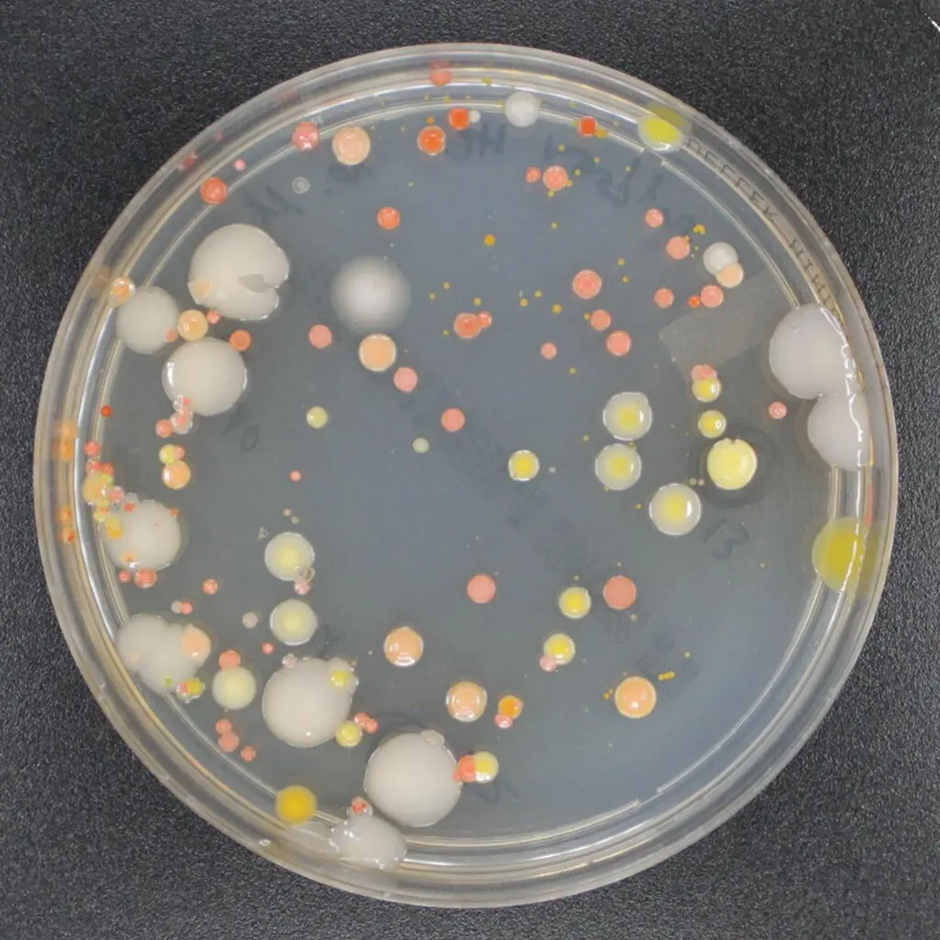- Courses
- GS Full Course 1 Year
- GS Full Course 2 Year
- GS Full Course 3 Year
- GS Full Course Till Selection
- Online Program
- GS Recorded Course
- NCERT (Recorded 500+ Hours)
- Polity Recorded Course
- Geography Recorded Course
- Economy Recorded Course
- AMAC Recorded Course
- Modern India, Post Independence & World History
- Environment Recoded Course
- Governance Recoded Course
- Science & Tech. Recoded Course
- International Relations and Internal Security Recorded Course
- Disaster Management Module Course
- Ethics Recoded Course
- Essay Recoded Course
- Current Affairs Recoded Course
- CSAT
- 5 LAYERED ARJUNA Mentorship
- Public Administration Optional
- ABOUT US
- OUR TOPPERS
- TEST SERIES
- FREE STUDY MATERIAL
- VIDEOS
- CONTACT US
10,000 Feet Up: Scientists Discover Airborne Germs
10,000 Feet Up: Scientists Discover Airborne Germs
16-09-2024

Researchers recently reported finding hundreds of different types of bacteria and fungi at altitudes as high as 10,000 feet during flights over Japan. These airborne microbes could potentially spread diseases globally.
Key Findings:
Study Overview:
- In 10 flights over Japan, scientists collected air samples from as high as 10,000 feet.
- The samples revealed a variety of bacteria and fungi, some of which could potentially be pathogenic to humans.
- The microbes were estimated to have traveled over 1,200 miles before being captured.
Key Discoveries:
-
Microbial Composition:
- The researchers identified at least 266 types of fungi and 305 types of bacteria in the samples.
- Many of these microbes are associated with plant growth, soil, and polluted environments.
-
Pathogens:
- Approximately one-third of the bacteria and slightly more of the fungi might be potential human pathogens.
-
Survival of Microbes:
- Despite their long journey, some microbes remained viable and grew into colonies in petri dishes.
Research Methodology
Flight and Sampling Technique:
- The research team used a Cessna airplane to fly into air masses moving from China over the Sea of Japan.
- Air was collected through an inlet on the plane and filtered to trap airborne particles.
- The sampling occurred in the free troposphere, a high-altitude layer where air masses can travel long distances.
Analysis and Findings:
- Samples were analyzed for microbial content and included DNA extraction.
- High levels of hafnium, likely from Chinese mines, were found.
- Fungal spores and bacteria adhering to dust particles were detected.
- Some microbes were identified as potentially pathogenic.
Theoretical Implications
Kawasaki Disease Connection:
- Dr. Xavier Rodó's research into Kawasaki disease, which causes fevers, rashes, and heart issues, inspired the study.
- Surges in Kawasaki disease cases in Japan were previously linked to winds from northeast China.
- This study suggests that airborne microbes could be part of the explanation for such disease patterns.
Source of Pathogens:
- Northeastern China, with its large-scale farming and industrial activities, might contribute to airborne pathogens.
- Dust plumes from soil erosion, fertilizers, and sewage could carry harmful microbes.
Scientific and Public Health Implications:
- The findings highlight the potential for high-altitude microbes to contribute to disease spread.
- Further studies are needed to determine if these airborne pathogens can reliably cause outbreaks upon reaching the ground.
Expert Opinions
David Schmale's Perspective:
- Schmale noted the surprising number of potential human pathogens discovered.
- He suggested that these microbes might be harmless relatives of disease-causing germs and recommended further research using human cells or lab animals.
Dr. Rodó's Future Plans:
- The team is preparing experiments to expose air samples to human lung cells.
- They are also analyzing additional samples for evidence of other organisms, including viruses.
Conclusion
The discovery of airborne germs at high altitudes opens new avenues for understanding the global spread of pathogens. While the study does not yet provide a clear link to specific diseases like Kawasaki disease, it underscores the need for further research into how airborne microbes might influence public health. The research highlights the importance of exploring these previously unexamined environmental spaces for potential health risks and preventive measures.
Must Check: Best IAS Coaching In Delhi
UPSC Prelims Result 2024 Out: Expected Cut Off & Other Details, UPSC Prelims 2024 Answer with Explanation, Daily Prelims Quiz, Daily Current Affairs, MONTHLY CURRENT AFFAIRS TOTAL (CAT) MAGAZINE, Best IAS Coaching Institute in Karol Bagh, Best IAS Coaching Institute in Delhi, Daily Mains Question Answer Practice, ENSURE IAS UPSC Toppers, UPSC Toppers Marksheet, Previous Year Interview Questions, UPSC Syllabus




